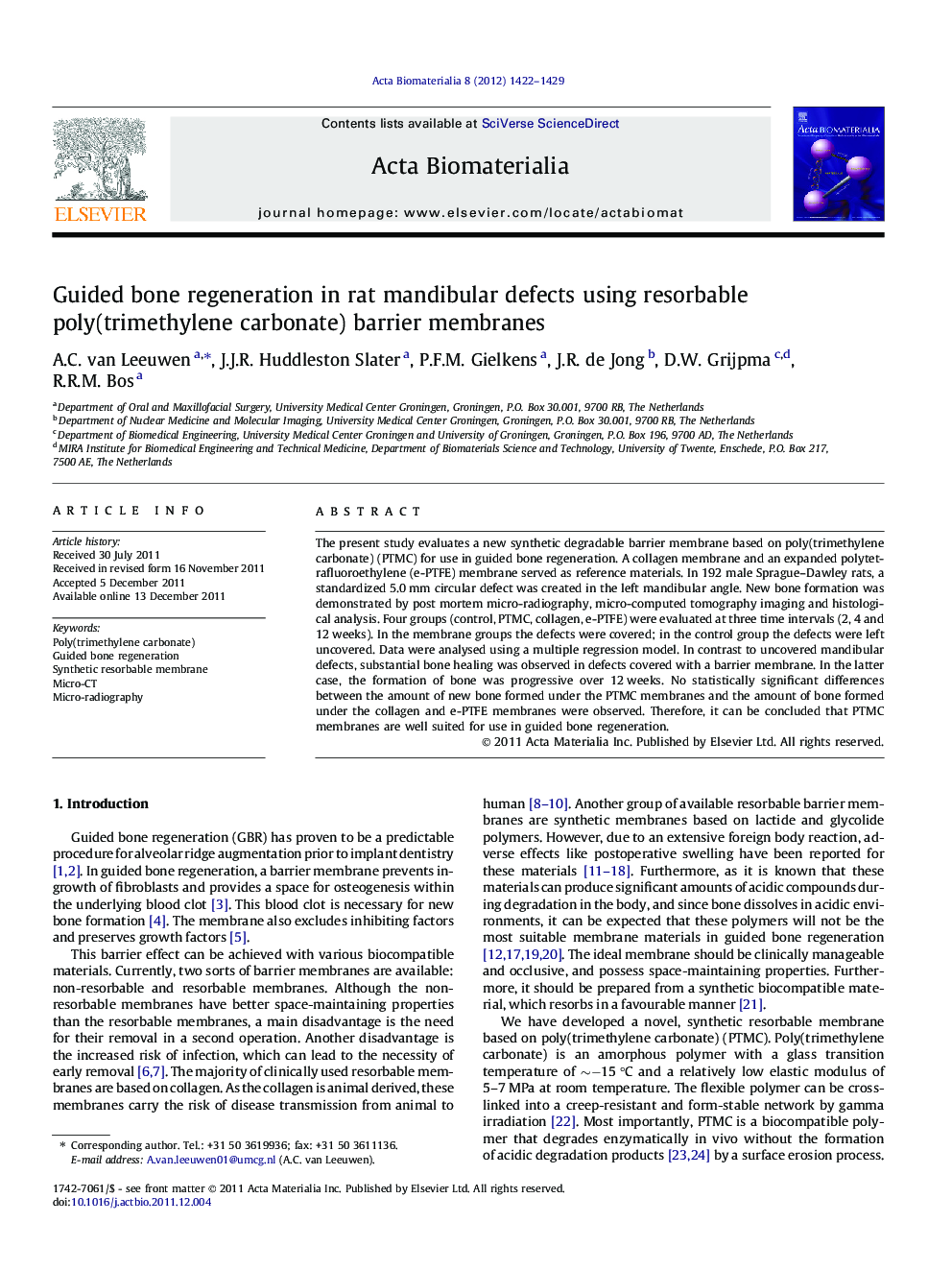| Article ID | Journal | Published Year | Pages | File Type |
|---|---|---|---|---|
| 1214 | Acta Biomaterialia | 2012 | 8 Pages |
The present study evaluates a new synthetic degradable barrier membrane based on poly(trimethylene carbonate) (PTMC) for use in guided bone regeneration. A collagen membrane and an expanded polytetrafluoroethylene (e-PTFE) membrane served as reference materials. In 192 male Sprague–Dawley rats, a standardized 5.0 mm circular defect was created in the left mandibular angle. New bone formation was demonstrated by post mortem micro-radiography, micro-computed tomography imaging and histological analysis. Four groups (control, PTMC, collagen, e-PTFE) were evaluated at three time intervals (2, 4 and 12 weeks). In the membrane groups the defects were covered; in the control group the defects were left uncovered. Data were analysed using a multiple regression model. In contrast to uncovered mandibular defects, substantial bone healing was observed in defects covered with a barrier membrane. In the latter case, the formation of bone was progressive over 12 weeks. No statistically significant differences between the amount of new bone formed under the PTMC membranes and the amount of bone formed under the collagen and e-PTFE membranes were observed. Therefore, it can be concluded that PTMC membranes are well suited for use in guided bone regeneration.
Graphical abstractFigure optionsDownload full-size imageDownload high-quality image (84 K)Download as PowerPoint slide
